|
|
Time-Lapse Videos of a Building Site Jorge L. Reyes and Robert Fisher School of Informatics - University of Edinburgh August 2008 |
|
Abstract
This
research explores the construction of Time-Lapse Videos from cluttered
consecutive images. It is focused
on the analysis of the evolution of a construction project (The Informatics Forum).
A capture process of 3 years produced a large image database which
provides the basis for this work. Images were affected by different artifacts
such as environmental and lighting changes, pedestrians, machinery and
vehicles. Mechanisms have been developed to automatically render the images and
reduce these adverse elements from the scenes to produce more 'truthful' videos
which more accurately describe the building construction, thus contrasting with
traditional techniques which only use captured raw images spaced at fixed
intervals to produce the output video.
Reduction
of noise, jitter removal and normalization of color levels are the methods
employed in the preprocessing stage to clean the image database and provide a
suitable starting point for the implementation of the time lapse video creation
algorithms. Groups of images captured on the same day are processed to produce
the frames of the final video which represent the background of the scene.
Foreground elements and sudden weather transitions are removed. Two different
methods to solve this are evaluated in this research. First, a multivariate
median filter is employed as a deterministic approach to solve the 'day image'
generation and processing. Then we employ a filter based on non-parametric
kernel density estimation and a neural network classifier. Results show
improvements on the time lapse videos. A visible reduction of the foreground
elements and a higher stability in the image colors present a smoother version
of the building construction.
On this page you can find:
what we think are the best reconstructed videos,
videos from different stages and algorithms
and the source images from which the different
stages were made. You can also find an MSc dissertation that describes
the work in more detail.
The image data was obtained from three cameras
(Doric:left: Corinthian:middle, Ionic:right) over about a 50 metre total
baseline. The data is for 599 days over the period 12 October 2005 through 30 May 2008.
![]() Best Reconstructions (about wmv format, 30 MB each):
Doric,
Corinthian,
Ionic
Best Reconstructions (about wmv format, 30 MB each):
Doric,
Corinthian,
Ionic
![]() J. L. Reyes-Ortiz, Probabilistic Time Lapse Video,
MSc Dissertation, School of Informatics, Univ of Edinburgh, 2008.
J. L. Reyes-Ortiz, Probabilistic Time Lapse Video,
MSc Dissertation, School of Informatics, Univ of Edinburgh, 2008.
Full text: PDF
Some Sample Images
Doric Corinthian Ionic
Before
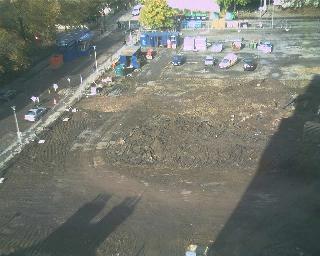
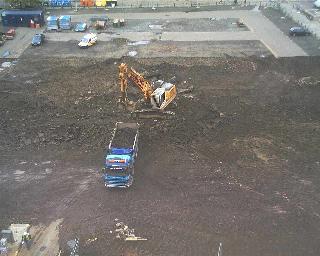

After
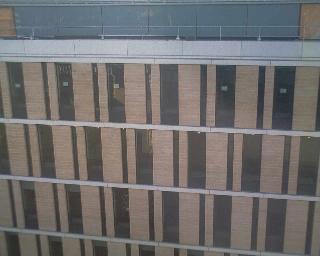
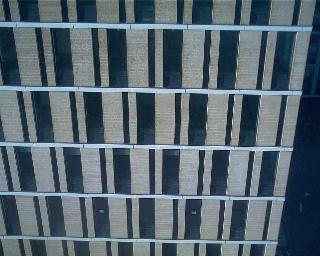
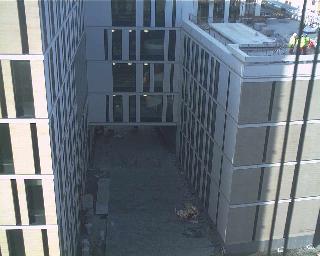
Video Gallery (avi format - about 45 MB each)
|
Traditional Approach |
|
Time lapse video from original images |
|
Multivariate Median |
|
Without image preprocessing |
|
Color normalization and noise reduction. |
|
Jitter removal, color normalization and noise reduction. |
|
Non-parametric kernel
density estimation |
|
Color normalization and noise reduction. |
|
Jitter removal, color normalization and noise reduction. |
|
Multivariate Median
of Temporally Neighboring images |
|
MVM images, neighborhood of 6 consecutive
frames. |
|
KDE images, neighborhood of 6 consecutive
frames. |
Source Images - one per day (at 12:00) for 599 days from 3 cameras. Some days don't have all 3 cameras. (Warning 250-350 MB zip files.) Pre-processing consists of: removal of camera jitter between frame capture, outlier pixel color replacement and some color normalization to account for weather, illumination and camera color-balancing effects. The 'Aligned' images are computed by a pixel-wise Median/Kernel' filter process over all 18 'Pre-processed' images from a day (every 10 minutes from 11:00-14:00). The 'Neighborhood of 5 frames' computes a pixelwise temporal median from +/- 2 frames about the current frame, using the 'Aligned' images as input.
|
Raw Images |
|
Pre-Processed Images |
|
Processed Images |
|
Multivariate
Median: Neighborhood of 5 frames |
